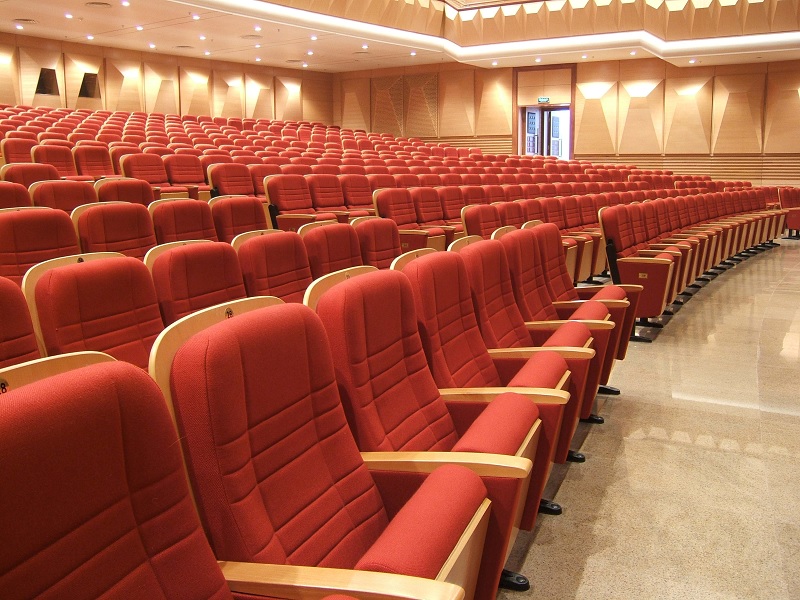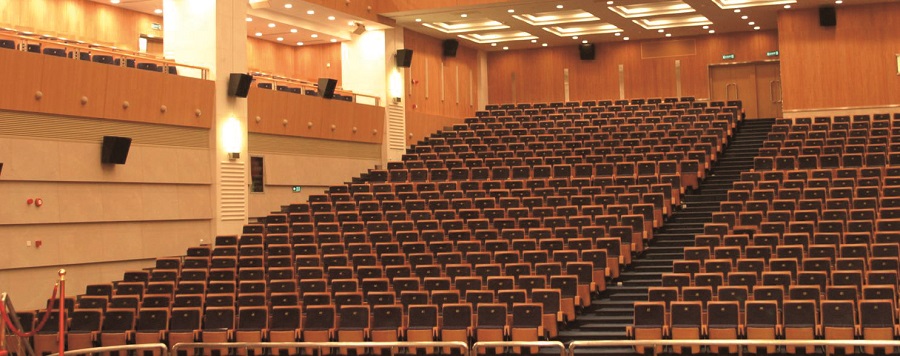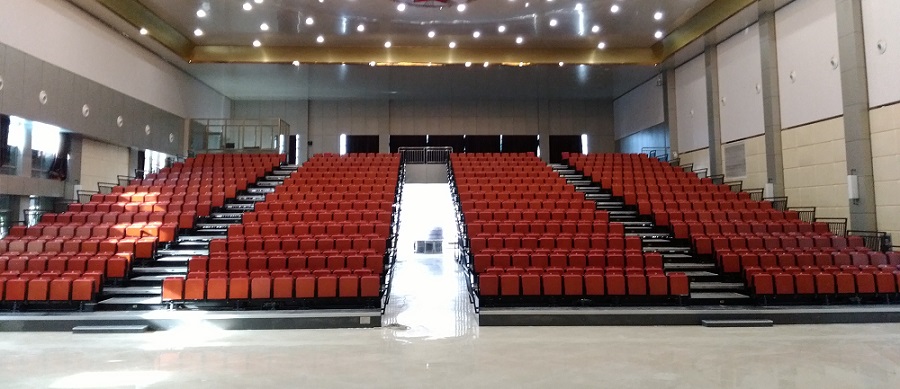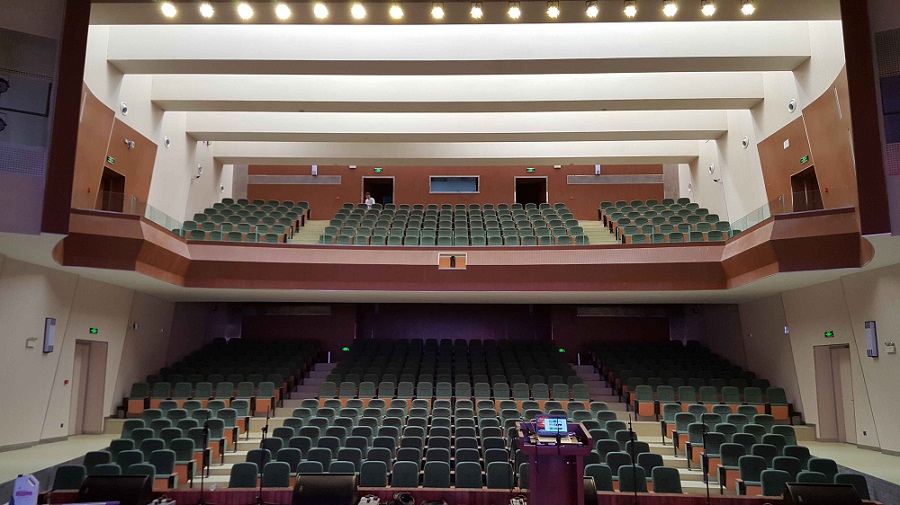Auditorium Chairs Solutions
Auditorium seating traditionally comprises three seating elements, either used as a combination of seating or individually to meet the design and operational needs of the auditorium. At JUYI, we are in a unique position to be able to provide high end quality solutions across the entire auditorium spectrum.

Inquiry This Chair Now
Applications and design features
It is suitable for theaters, auditoriums, lecture halls and other places. It should have a good line of sight during meetings and performances. The seat should be easy to maintain and clean, and it should be comfortable when used and not easy to fatigue.
In most cases, sofa-like cushions are used. In order to facilitate the evacuation of people when leaving the field, the cushions can be turned over. Seats should consider the number of seats and local lighting facilities in the dark, so that users can identify and find seats.
According to the needs of use and on-site design, the seats of the auditorium need to be placed with documents and writing boards for recording. Special auditoriums also require consideration of the combination with simultaneous translation equipment and voting and speaking equipment; some theaters or auditoriums also require seats cooperate with air conditioning system.

Inquiry This Chair Now
Structure and technical characteristics
The main force-bearing framework of the seat is a steel structure, the seat surface and back are made of elastic materials such as polyurethane foam plastic, and the exterior is made of natural animal leather or artificial leather, textile fabrics, etc.
The main technical characteristics and parameters of the product are as follows:
Shape symmetry: When the diagonal length of the seat back and relative armrest symmetry is ≤ 1000mm, the difference is ≤ 8mm; shape symmetry: when the seat back and the relative armrest symmetry diagonal length is ≥ 1000mm, the difference is ≤ 10mm;
Wood moisture content: ≤ 16.0% (or not greater than the average wood equilibrium moisture content of the area where the product is located);
The physical and chemical properties of the finish: The coating of wood products meets the requirements of the standards; the coating (plating) of metal parts meets the requirements of the standards;
Mechanical properties: Durability test: Class A 100,000 times without damage; back looseness ≤ 2°; 55mm ≤ seating surface compression ≤ 110mm;
Flame retardant performance: The product has passed the cigarette ignition resistance test;
Noise: The number of decibels of the single seat noise is ≤ 15db.

Inquiry This Chair Now
Main raw and auxiliary materials
The seat is mainly composed of back, seat, armrests and feet. The specific structure is as follows:
The back seat cushion is covered with high-grade seat fabrics with polyurethane high-resilience styling foam. The fabric can be determined according to customer requirements. Comfortable and durable, without deformation.
The back panel is a high-quality multilayer board with double-sided beech plywood.
The seat cushion is equipped with an S-shaped spring, and the seat bottom adopts a unique sound-absorbing panel, which has a perfect sound-absorbing function. The seat cushion is turned up with a torsion spring rebound design, which is accurate and low noise.
The armrest panel is made of refined beech wood.
The foot armrest frame is made of A-grade steel plate compression molding and welding. The shape of the foot plate adopts concealed technology, and the appearance is smooth and beautiful without dust accumulation.
Covering fabrics: Color fastness to rubbing of leather, artificial leather and textile fabrics ≥ 4; adhesion fastness of leather coatings ≥ 2.5N/10mm; textile fabrics formaldehyde content ≤ 300mg/kg;
Formaldehyde emission of man-made panels: Internally meets the requirements of GB 18580-2001 standard E2; external appearance meets the requirements of GB 18580-2001 standard E1;
Solid wood boards: There should be no defects such as bark inside and meet the standard requirements; the exterior materials should be consistent with the label and the defects should meet the standard requirements;
Metal parts: High-quality high-frequency welding materials are used, and the thickness of the stressed parts is ≥ 2mm;
Foam plastic: Seat sponge density 45~50 kg/m³, back sponge density 35~40 kg/m³, shore hardness 52, oxygen index ≥ 28; resilience performance A grade ≥ 45%; compression set A grade ≤ 5.0%;
Adhesive: Hazardous substances meet the requirements of GB 18583-2001;
Coating: Hazardous substances meet the requirements of GB 18581-2001;
Spring wire: Snake-shaped spring wire diameter: 3.0~4.0mm; Diameter of concave (or cloth-covered) spring steel wire: 1.3~3.0mm.

Inquiry This Chair Now
Use and maintenance
1. Wipe off the dust on the surface of the seat with a clean soft cloth before use, and keep it clean frequently.
2. Do not jump on the seat surface, so as not to be affected by deformation after partial compression.
3. Avoid touching the surface with sharp angles or tools like tools. Prevent scratches on the fabric.
4. Avoid strong light (including sunlight) shining on the seat for a long time to avoid partial fading or panning.
5. Daily maintenance: Use a clean soft cloth to frequently wipe dust or stains on the surface of the seat. The gap between the back, armrest and the seat surface can be cleaned with a vacuum cleaner. It is forbidden to use wet cloth or chemicals such as acid or alkali to contact the fabric, so as not to affect the surface quality and service life.
6. Regular maintenance: Generally, it is maintained once every quarter. After wiping the seat surface with a clean soft cloth, the leather fabric can be evenly coated with a special leather cleaner or polish, and then wiped with a clean soft cloth to clean it evenly. The cleaning and maintenance of textile fabrics should provide methods and regulations to prevent the fabrics from shrinking after washing and affecting their use.
Warning
1. The carton (or wooden box) and foam plastic used for seat packaging should be cleaned up in time to avoid unnecessary safety hazards.
2. Don’t put your hands, feet or other parts of the body into the cushion and turn up the joint during use, so as to avoid harm to the human body.
3. When using it, underage children should pay attention to avoiding injury to them by turning up (or putting down) the cushion.
Handling and storage
1. During transportation, professionals should be asked to disassemble and assemble, and move gently to avoid structural damage, breakage and loosening.
2. When transporting, there should be outer packaging, and handle with care. When reinstalling, adjust the use of the seat to maintain normal use.
3. When storage is not used for a long time, it should be covered with dust-proof and light-proof packaging materials and stored in a dry and ventilated indoor environment.
Fault analysis and troubleshooting
Common fault analysis and troubleshooting are shown in the table below.
Malfunction phenomenon | Cause analysis | Elimination method |
Inflexible use of seat moving parts | Loose or lack of lubricating oil in connecting parts of moving parts | Tighten the connecting screws and add lubricating oil appropriately |
Paint on the wooden armrest or back is white | May be in contact with highly humid objects | Cover the white area with a hot and humid towel until it fades |